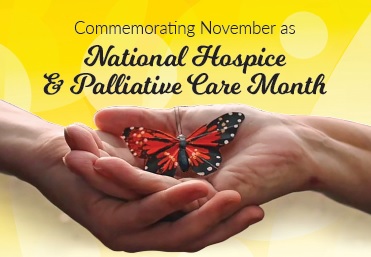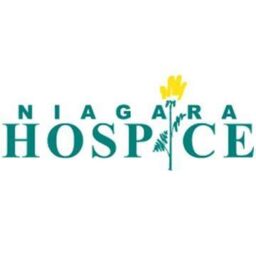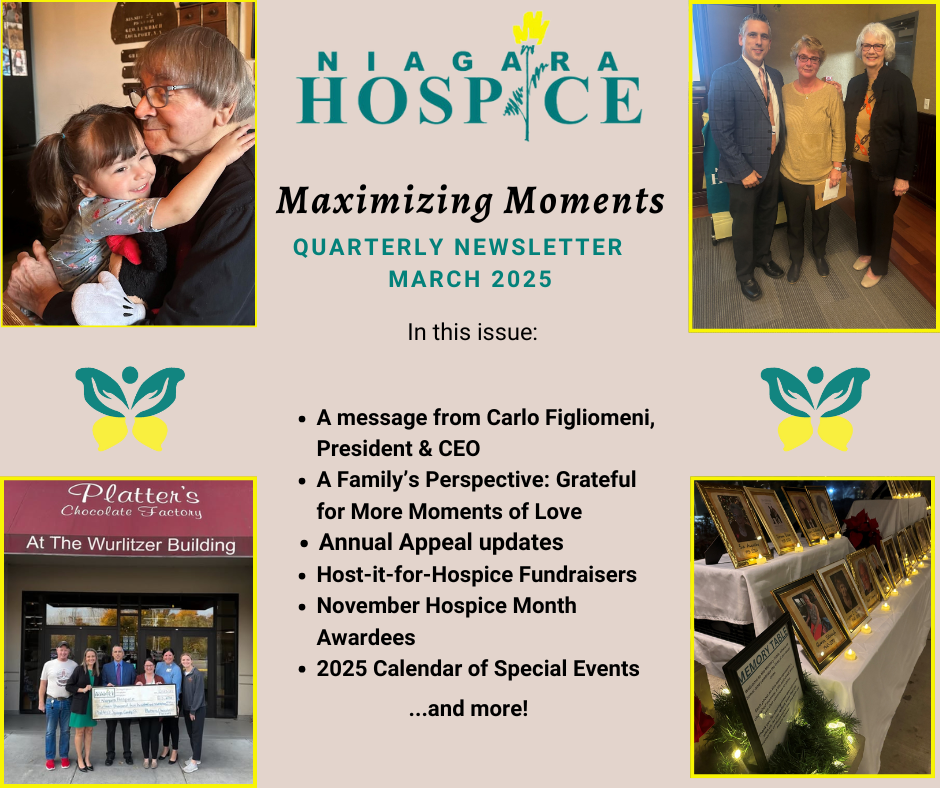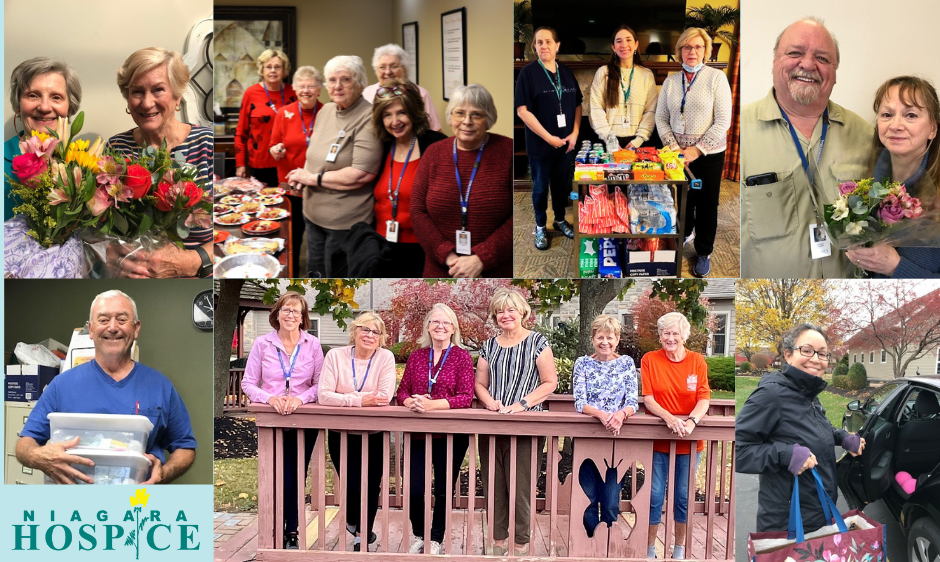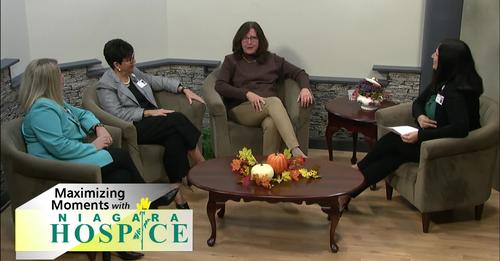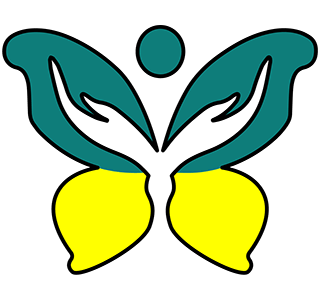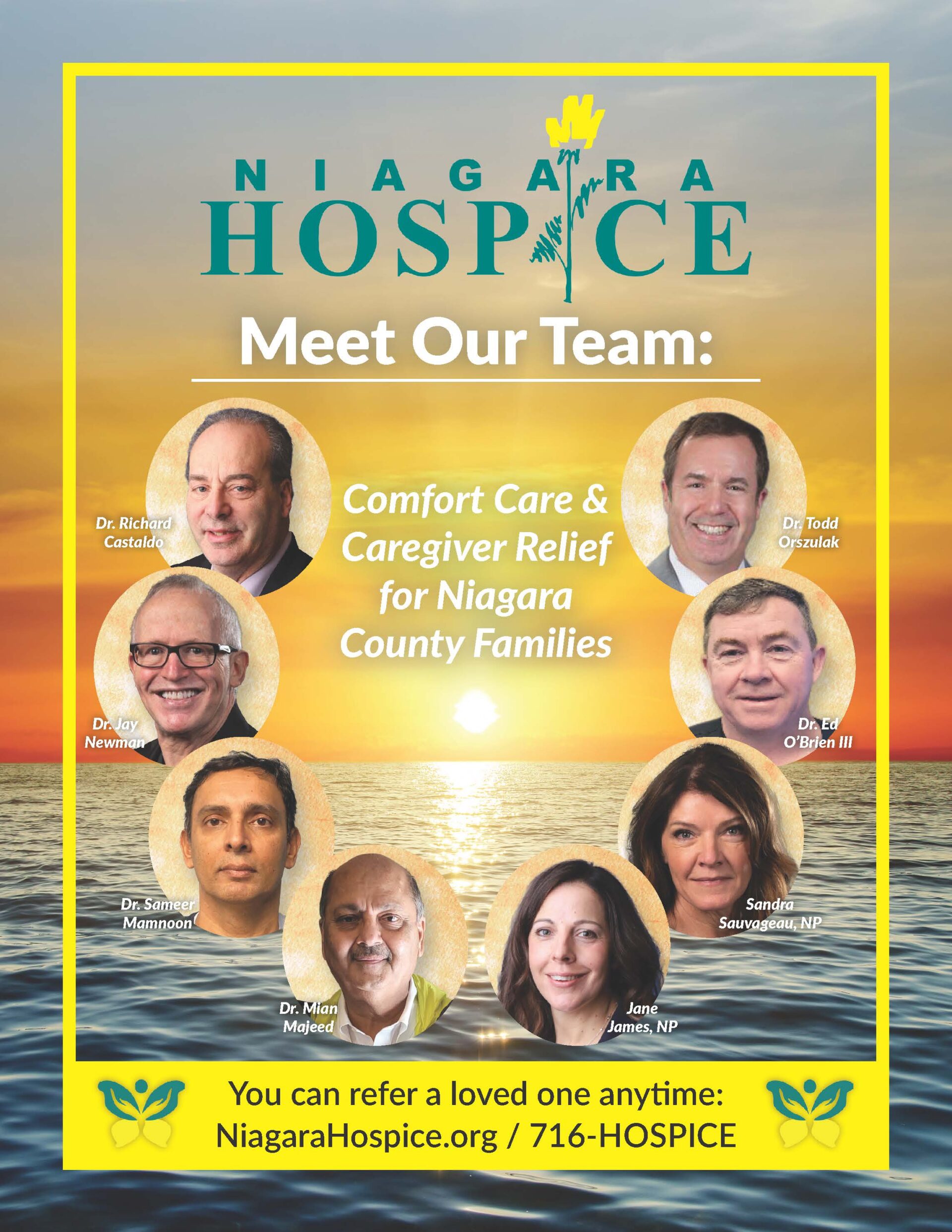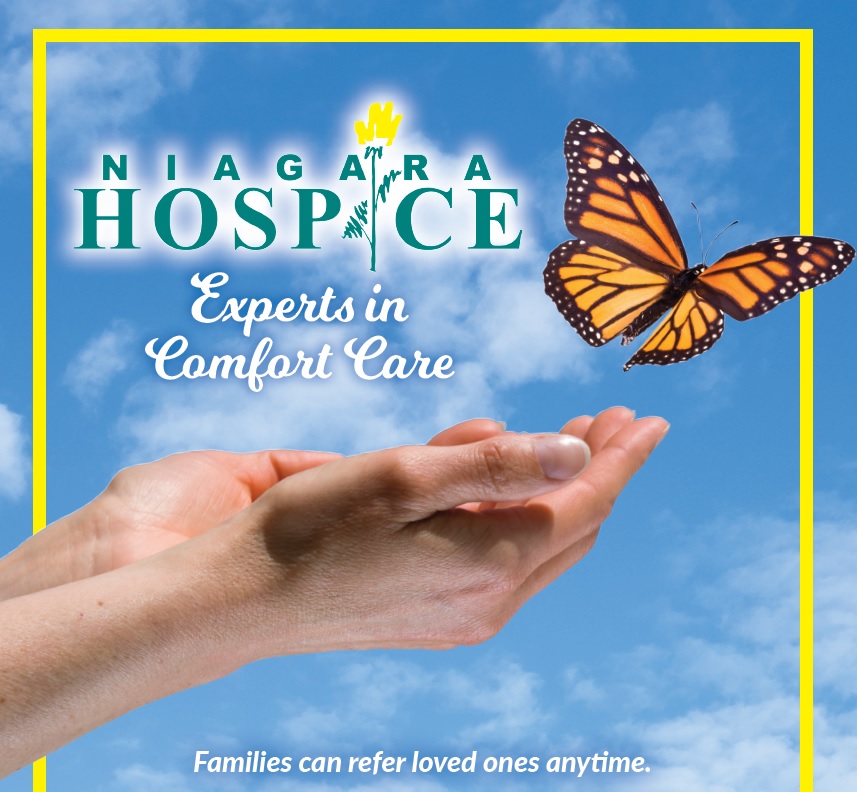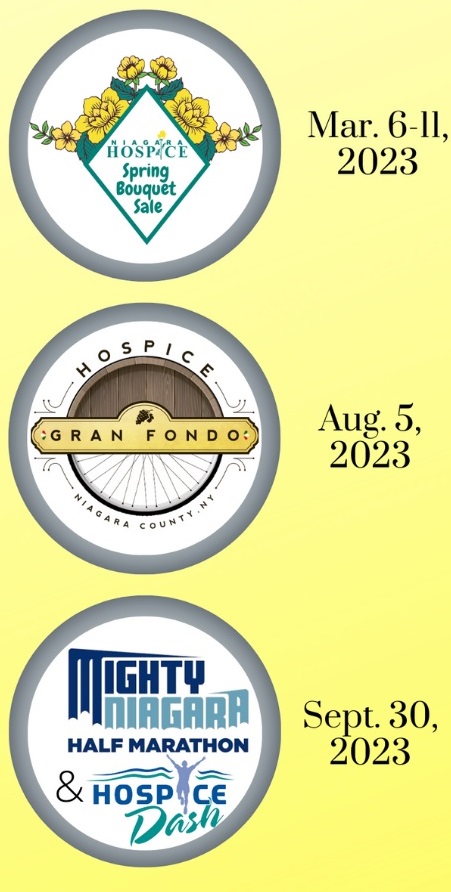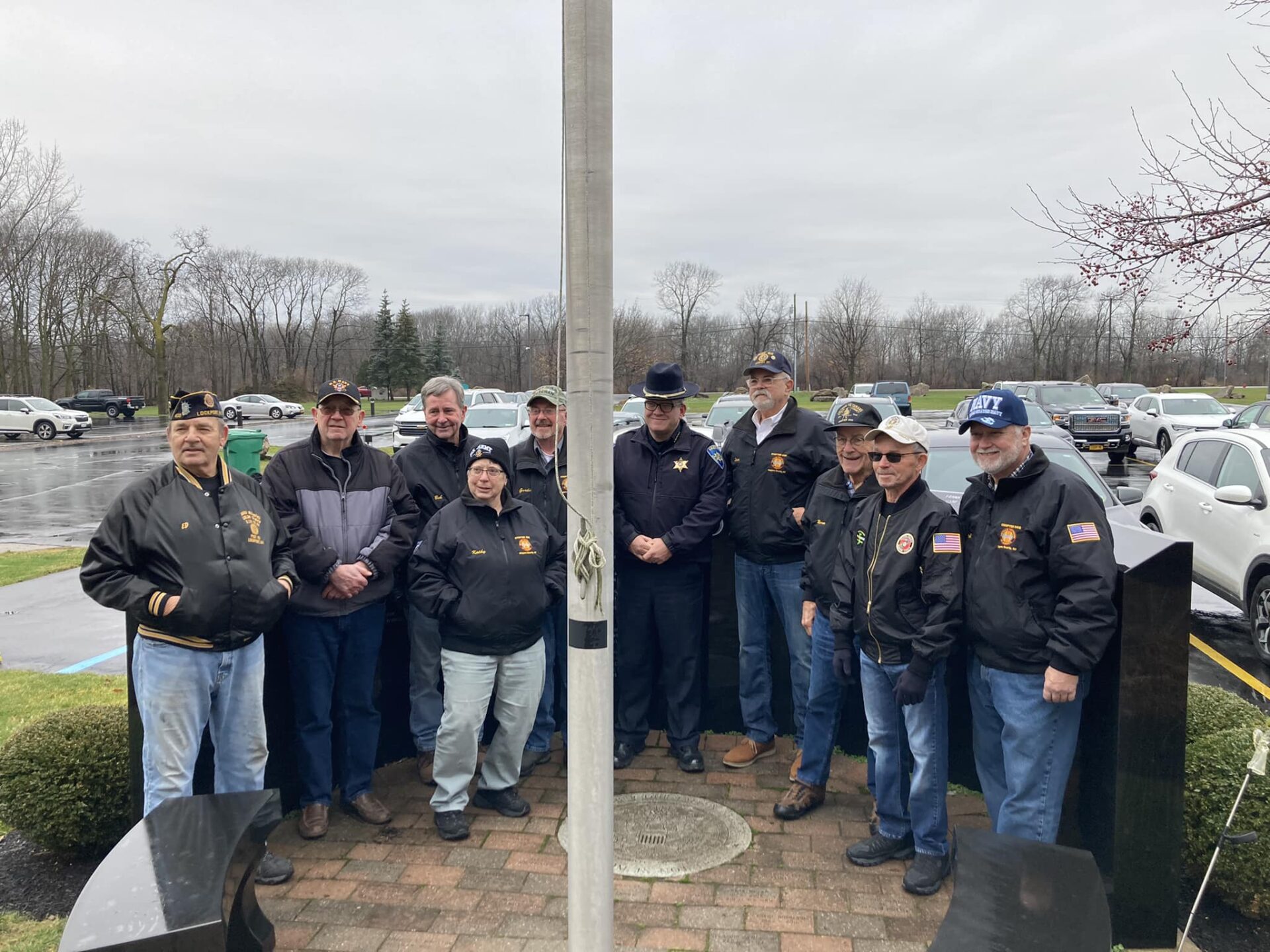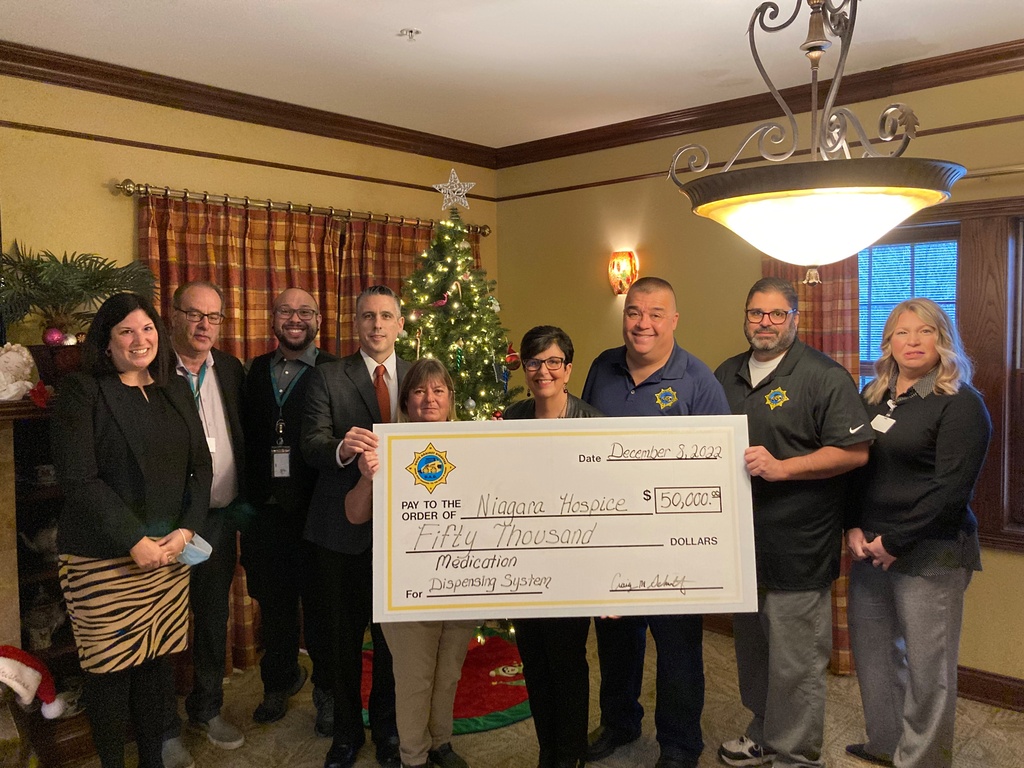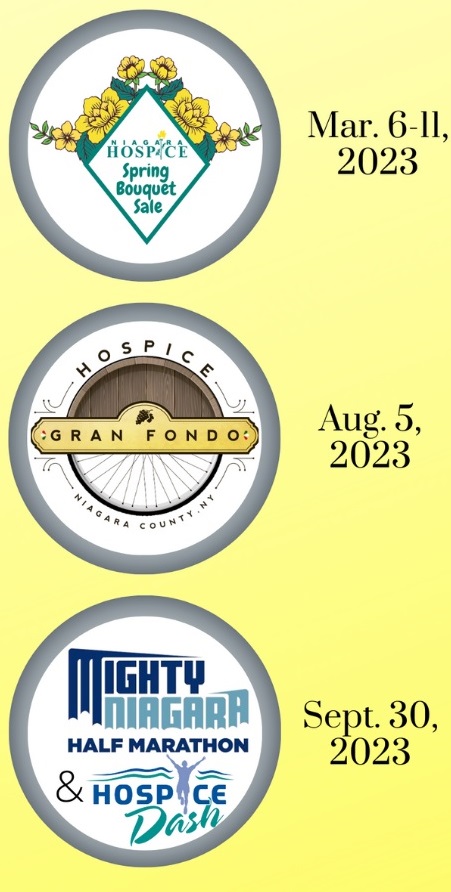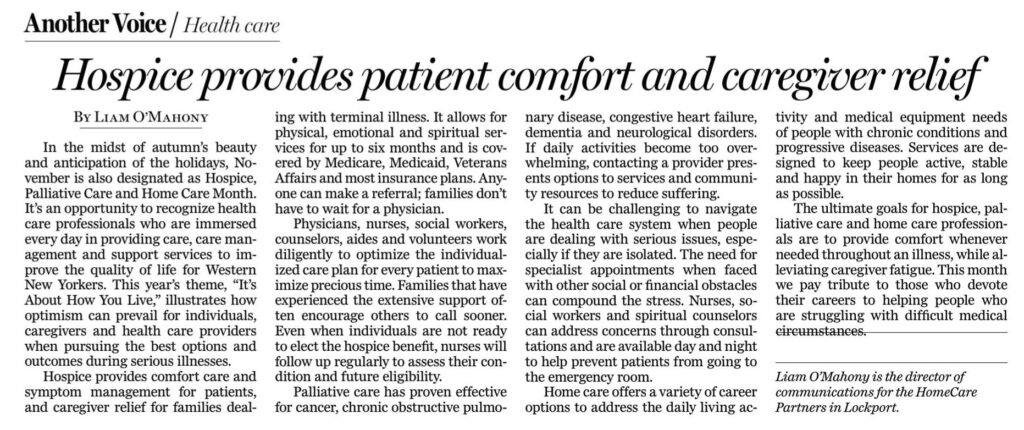Forever Changed….Finding Meaning & Hope Through Grief
Written by featured contributor: Doreen Alati
Blog #2 of the Niagara Hospice “Because We Are Still Here” Grief Support blog series
Change is an inevitable part of life. Some changes are exciting and welcomed; the miraculous birth of a baby, entering a new marriage, and the beauty of the shifting seasons. However, there are changes in life that are not welcomed. Changes that can leave one feeling confused, angry and hopeless. It is the change that happens when we lose a loved one and find ourselves in the throes of grief.
My grief journey began the minute my husband was diagnosed with cancer; a rare, aggressive type that left him mostly bedridden for 11 months. He fought hard, we fought hard, until a beautiful summer’s day in late August of 2020, when my husband and best friend of 40 years, took his last breath.
My husband was a generous man with an amazing heart. He cared for people and saw the good in everyone. He was faith-filled and always doing acts of kindness for people. So many stories came out after he passed away of how he touched others’ lives. And then, in an instant, he was gone, and nothing would ever be the same again.
I was unprepared for the intensity in which my heart would hurt, and the abruptness of how my life would be forever changed. At first, I felt relief that he was finally done suffering and out of the unbearable pain that comes with cancer. And then I went into shock and found myself completely and utterly grief stricken. I didn’t know where to go or who to turn to.
And then, within a few days, I received in the mail, a beautiful card, along with a brochure from the Niagara Hospice Bereavement Department. The brochure outlined their mission and their services, but what stood out the most were the words “We’re here for you.” I needed help and I needed it quickly, so I contacted the department immediately.
I was connected to a counselor who soon became my lifeline from drowning in a stormy sea. With each session, hope began to slowly emerge. In a safe space, and without judgement, I was able to express my feelings and emotions and was reassured that whatever I was feeling was okay.
I also sought out group support in addition to the one-on-one counseling through Hospice. I attended faith-based grief groups through local churches. I connected with other widows and began attending and co-facilitating widows support groups. As I continue to surround myself with others who have walked through grief and widowhood, I find comfort and hope.
My faith, my family, and my friends were, and continue to be my anchors. They lovingly and gently remind me that my life still has purpose. They encourage me to keep my eyes fixed on the positive, the good things. They help me see me that this is honoring to my husband’s memory, and that he would want me to keep going, keep hoping, keep loving.
My grief journey has taught me to take a really horrific and life changing situation and give it meaning. Meaning to me is finding your way after loss. Meaning is identifying that I am here, and what kind of purpose can I bring to the rest of my life.
There for others: I now find myself being more compassionate and empathetic to those who have experienced loss. I feel I am better equipped to love and support them and make myself readily available, at any time, to listen and to care. Love more: I cherish my relationships more and have a deeper commitment to friends and family and value the time we spend together…I am truly grateful for every moment. More open-minded: I am more receptive to new friendships and connections. Because of loss, through support groups, church, and other community related activities, new and exciting relationships are being built. A better perspective: I try not to sweat the small stuff as much and have gained a deeper understanding of what really matters in life.
Everyone’s grief journey is different and unique. No two people will have the same experience. Each person will navigate it on their own timeline and in their own way. For me, by surrounding myself with others, through support groups, community centers, faith-based organizations, etc., has been helpful.
Grief will always remain a part of me. But as time moves forward, I find the pain has begun to soften…the constant surge of the waves from the storm have become more stilled. The intensity has begun to shift from the forefront to the background…always there, but not as loud. It is less consuming now and has given rise to a greater sense of peace and the possibility of a future where hope can live again.
I continue to re- examine my loss in order to recognize how I’ve changed, and to feel good about these changes. I try to embrace them as a way to honor and remember the life and the love my husband and I shared. He will be forever missed; I will be forever changed.
Comments from the bereavement counselor, Mark Dailey
Each grief journey is unique and each journey share similarities. Doreen experienced a great upheaval on every level – Spiritual, Emotional, Physical, and Mentally. Loss throws us into a crisis mode. That crisis takes place on every level. It produces an identity crisis, a purpose crisis, a life-dreams crisis, and a time crisis. James Marcia, a clinical psychologist, did some interesting, and ground breaking work on Identity Development (centered on adolescents). His theories have some clear application to one’s grief journey. The heart of the theory is that our identity is the result of decisions we make in the situations in which we find ourselves.
When death pushes into our homes everything changes, everything! We are forced to rediscover who we are without the other. For decades it was Doreen and her husband, then suddenly her husband was gone and she was forced to discover who SHE was. Additionally, we must now find a new purpose in life, and for life. Doreen shared her struggle in finding that purpose. Those who are caregivers for extended periods of time often feel that they also lost their purpose, as caregiving ends. So on our journey we must seek ways to contribute in ways that are meaningful to self, such as helping others on their journey.
Death robs us of our future dreams and goals. The plans to travel, to be active and involved grandparents, to explore new and existing hobbies, or simply to spend time together. Those are gone, and now one must discover new visions of the future. Our last crisis involves time, the time we have left and what is important versus what is urgent.
As we read Doreen’s heartfelt story we can see her moving in and through all of these crises and in so doing, achieving her new identity. Our identities are the result of our decisions made in those times of crises. Doreen made the decision to be compassionate and empathetic – to give and support those on their journey. Also, she made the conscious decision on her journey to hold tightly to those in her world, as well as being open and receptive to new people and new experiences while focusing on what is important rather than the urgent.
It’s a journey no one wants to take, but at some point, we will take it. A journey one travels by themselves, but one you do not take alone as Doreen learned. Death brings great pain that we keep the rest of our lives, and it can produce great growth and strength in us that will guide us the rest of our lives.
On the Inside
A Blog Dedicated to Volunteering at Niagara Hospice
by Heidi Truschel, Volunteer Services Specialist, Niagara Hospice
Nurses, aides, doctors, social workers, and counselors are all an important part of caring for patients at Niagara Hospice. There are other important, sometimes unexpected, roles that are performed by volunteers. Often, volunteers fill in all the remaining spaces with the most tender of touches. In doing so, these individuals often develop meaningful relationships with Niagara Hospice that last for years. Each month, we would like to shine a spotlight on our volunteers, their contributions, and what motivates them.
Time may be our most precious resource. So what makes volunteers want to contribute their time and effort to Niagara Hospice? How do they relate to our mission of providing comfort and care during difficult times? As you will see, for them, it’s important what happens on the inside. This emotional connection, and their experiences within Niagara Hospice, are why we’re calling this blog “On the Inside.” Here are some of the reasons why volunteers give:
Many volunteers feel a personal tie to Niagara Hospice. This may occur because a loved- one was served by our organization or a hospice elsewhere. Some volunteers participate because a death in their family left lasting beliefs and feelings that they have in common with Niagara Hospice. Our mission touches their heart and spirit, making them want to “pay it forward” for others. Their volunteering is a deeply felt expression of gratitude.
People may feel volunteering is a way to help move the community in the right direction. They may wish to lead in some way, or to role model something positive. Other volunteers may want to assure that a cause is going strong. For them, volunteering is a way to maintain a value itself – to assure that caring, hospitality, dignity, and other principles have a place in the world. Dame Cicely Saunders wanted to create a place where the terminally ill could receive relief from pain in order to live fully to their last day. She founded the first hospice in London, England to make that a reality. We carry on her legacy at Niagara Hospice.
Volunteering can be a way to use your skills and experience. Many of us have acquired special knowledge along the way that could benefit others. Whether you have pursued a hobby or performed tasks professionally, volunteering can be a way to share your passion and talents. Being productive can feel very satisfying.
Volunteering can help you meet new people and offer a sense of belonging. A decision to volunteer may be based on the same values and priorities as other volunteers. It’s an opportunity to meet like-minded, motivated people who add to the experience. Some volunteer assignments, such as fundraising events, can bring volunteers together to work on common goals.
Volunteering can provide opportunities to try new things and explore your community. Is there a skill you haven’t had the opportunity to put to use? Would you like to embark on a new career, but need to see how it works on the inside? Volunteering can introduce you to new roles or new approaches to helping people. At Niagara Hospice, volunteers choose what to get involved in, and how often. There are opportunities to shadow other volunteers performing tasks, learning from others until you are comfortable.
Niagara Hospice makes it our priority to assure that volunteers find a role that is a comfortable fit. Volunteers can choose whether to interact with patients, or to work behind the scenes. As you will see in future articles, there are many ways to help.
Niagara Hospice on LCTV!
Niagara Hospice is happy to share more information about our services and organization on LCTV.
Community Support Highlight Video
Thank you for your continued support throughout this year! Check out this highlight video of the many community initiatives & activities that contributed to improving quality of life for patients & families!
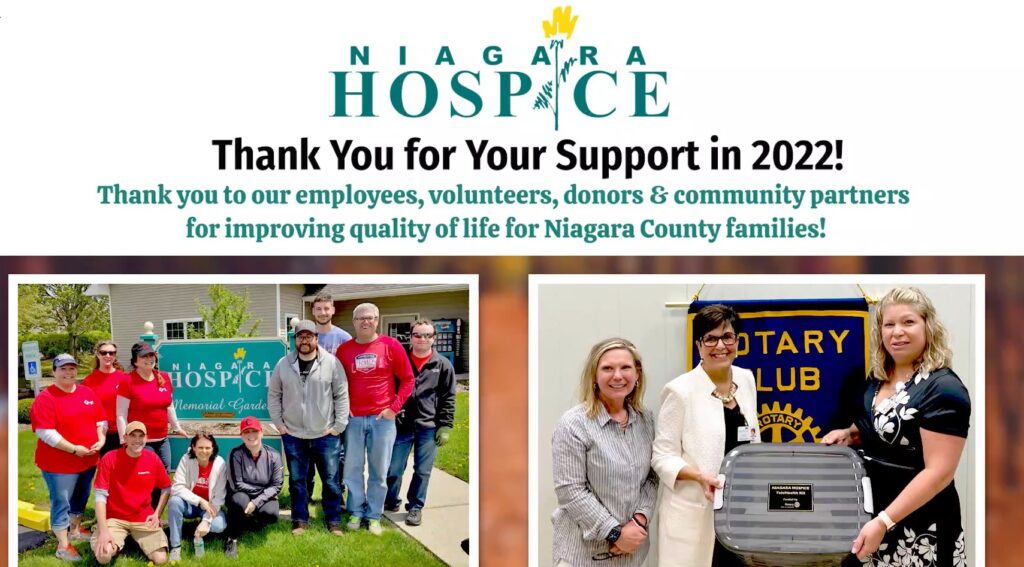
Dr. Richard Castaldo Dementia Story Featured in Buffalo Healthy Living
The January issue of Buffalo Healthy Living magazine features a guest column by Niagara Hospice Medical Director Dr. Richard Castaldo about how different types of sensory engagement activities can help improve quality of life for people with dementia as well as their caregivers. The story is on page 26 of this magazine link.
Winter Newsletter
The Niagara Hospice December newsletter is available here. Our employees & volunteers wish everyone a happy holiday season!
Niagara Hospice House Expansion Opens to Patients
Niagara Hospice announced that the Hospice House expanded residential wing is now open to admit patients. After a year of construction, the six new residential patient suites brings the total at the facility to 16, the maximum allowed by New York State.
“We are very pleased to open the new residential wing and admit our first patients this week, eliminating any additional waiting for placement for these individuals and their families,” said John Lomeo, President & CEO of Niagara Hospice. “The added suites are furnished for optimal comfort and convenience like the original wing built 15 years ago, and our staff is ready to care for more patients. Thanks to the incredible community support we received over the last year, we are grateful to have completed this important project to enhance access to community care before the start of 2023.”
With the large residential wing now having 60 percent more capacity, Niagara County hospice patients who need increased services or have an insufficient caregiver system at home will not have to wait any longer than necessary to be admitted to receive around-the-clock comfort care at Hospice House.
“This is a special time for our long–time staff and new employees as we embrace the opportunities to provide specialized care and personalized support for many more families,” said Janet Ligammari, RN, Director of Hospice Facility Services at Hospice House. “We have always wanted the ability to admit more families, and now that this new wing is open, our staff stands ready to ensure each and every new family that enters the facility will receive the best care and attention throughout their most challenging times.”
Since opening in June 2007, the facility has cared for more than 6,000 Niagara County residents and their families. The residential wing originally consisted of eight suites, and then it was expanded to 10 in 2010. The general inpatient wing continues to operate with 10 suites designed for patients needing short-term medical monitoring and symptom management. Each suite receives 24-7 care from staff and features a sitting area and easy-chair sleeper. The facility also has gathering rooms, a kitchen, a chapel and a children’s game room.
Hospice House is the only general inpatient and residential facility for hospice patients in Niagara County, and the general inpatient wing is one of just 12 facilities of its kind in New York State.
For more information or to view an aerial video of the expanded Hospice House, visit NiagaraHospice.org/HospiceHouse.
Vietnam Veterans of America Niagara County Chapter Place Holiday Wreath at Niagara Hospice
On December 16, the Vietnam Veterans of America Niagara County Chapter #268 and Niagara County Sheriff Michael J. Filicetti visited the Niagara Hospice campus for the annual laying of the wreath.
Gordie Bellinger and Norm Pearson led the ceremony at the Niagara Hospice Service Persons Memorial, which was dedicated in 2009 and features 115 Veterans, law enforcement members & first responders from Niagara County who served our nation and communities. For more information, click here to read the brochure.
Drive Against Diabetes (D.A.D.) Gives $50,000 to Hospice House Fall Campaign
On December 8, Drive Against Diabetes (D.A.D.) visited the Niagara Hospice campus to give a $50,000 donation to the fall appeal for two new automated dispensing system units at Hospice House. These units allow medications to be stored, accessed and dispensed near the point of care while controlling and tracking drug distribution. Consistent with the national prevalence of diabetes, Niagara Hospice in 2022 cared for 214 patients with diabetes or approximately 21% of all Niagara Hospice admissions were impacted by the disease.
“Our organization was looking for an impactful way to assist older Niagara County residents with diabetes, and the opportunity to be a part of funding the new medication systems at Hospice House was a natural fit for us to address the needs of all hospice patients during end-of-life care,’ said Craig Schultz, Founder & President of Drive Against Diabetes. “As a fellow nonprofit organization in Niagara County, we are pleased to support Niagara Hospice this holiday season as they pursue their campaign goal of $100,000 for the two units.”
“We are very appreciative of this generous gift from Drive Against Diabetes,” said John Lomeo, President & CEO of Niagara Hospice. “The interest that Craig Schultz and his foundation staff showed in supporting this essential medication system was inspiring to our staff. It is always such a wonderful gesture when another organization reaches out to help us with our fundraising campaign to ensure continued high-quality comfort care for Niagara County residents and their families.”
If you would like to support the campaign, please click here or call 716-439-4417.
2021-22 Annual Report
Click here to view the 2021-22 fiscal year-in-review report for Niagara Hospice.
Fall Newsletter
To commemorate November as Hospice & Palliative Care Month, Niagara Hospice presents this organizational overview that outlines our end-of-life comfort care and support services, fundraising options, volunteer opportunities and careers to improve quality of life for Niagara County families during difficult times.
